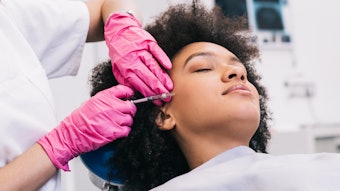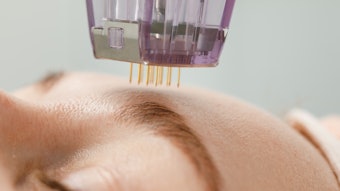
Allergan Aesthetics, an AbbVie company, noticed a disconnect between patients and healthcare professionals when it comes to understanding skin quality definitions, leading to uncertainty of which treatments may be necessary for their concerns. Allergan performed a three-phase study to understand how providers and patients communicate around skin quality, and its findings birthed the development of a unified skin quality vocabulary–the Skin Quality Index–to support effective care.
Allergan introduced their study and concept of the index at the annual Aesthetic and Anti-Aging Medicine World Congress in March. Allergan's presentation delved into how this study led to the informed development of the index. The index will be rolled out to professionals in the coming months, with the goal of helping patients communicate their needs and wants around skin quality and support professionals in delivering these outcomes, per a March 12 announcement. There is not a set date on when it will be available yet.
Why is it Necessary for Professionals and Patients to Refer to an Index?
Sherket Peterson, PhD, a director of clinical development and scientific innovation for aesthetics medicine at Allergan Aesthetics, says as patients and providers use different terminology for skin quality, it creates a gap in providing effective care. With this index, they're on the same page, by defining and describing skin conditions so professionals can assess and provide treatment outcomes that are satisfactory.
The Skin Quality Index identifies four key categories, or domains, to talk about skin quality: visible color changes, topographical changes, hydration and sebaceous equilibrium changes, as well as mechanical changes. Patients and professionals will find 15 terms and definitions falling into these categories to enhance understanding and decision-making, from consultation to treatment.
 The Skin Index identifies four key categories or domains to talk about skin quality: visible color changes, topographical changes, hydration and sebaceous equilibrium changes, as well as mechanical changes.Courtesy of Drobot Dean at Adobe Stock
The Skin Index identifies four key categories or domains to talk about skin quality: visible color changes, topographical changes, hydration and sebaceous equilibrium changes, as well as mechanical changes.Courtesy of Drobot Dean at Adobe Stock
“The challenge is that patients may not understand that these attributes are defined as ‘skin quality’ and may use different terminology to express their concerns when communicating with their provider that are often lost in translation,” Peterson says.
The Three Phase Study
The first phase of the study in creating the Skin Quality Index involved a review of scientific literature across multiple domains indicating 18 skin quality attributes that Allergan categorized, says Peterson.
Phase two refined this framework to 15 skin quality attributes across four domains using recent scientific literature. Phase two also gathered feedback from several global healthcare professionals on how to define the attributes found from phase one, like crepey skin and hyperpigmentation for the index.
Phase three consisted of a qualitative and quantitative segment. The qualitative segment worked with patient focus groups to understand if the definitions were impacted by age, gender or ethnicity. The quantitative segment then used online surveys of over 200 aesthetic providers of varying expertise and over 1,000 patients to assess if the terminology was impacted by provider expertise or the “conversational partner.”
“[The index] will ideally increase the number of safe and efficacious treatments and products on the market,” Peterson says. “By defining each skin quality issue, we hope that this will bring clarity to the space and support health authorities in their approach to evaluating products and outcomes around skin quality resulting in more efficacious treatments and options.”
Looking Ahead at Professionals Putting the Index to Use
The index, Peterson says, directly addresses gaps between patient and professional in describing and treating skin condition by providing a standardized vocabulary with clear definitions for providers and patients.
“By using this common language, providers can better understand the patient's concerns, and patients can feel more confident that their concerns are being accurately understood and addressed,” Peterson says.
The Allergan team anticipates this tool leading to more personalized and accurate treatment plans. Through a clear understanding of the patient's concerns, expressed in standardized terms, healthcare professionals can select the most appropriate treatments and tailor them to the individual's specific needs and goals.
“This initiative combines several years of research, partnership with health care providers and elevating the patient voice, which truly demonstrates Allergan Aesthetics’ unwavering commitment to addressing the disconnect in how patients and providers communicate about skin quality and skin concerns,” she says.











